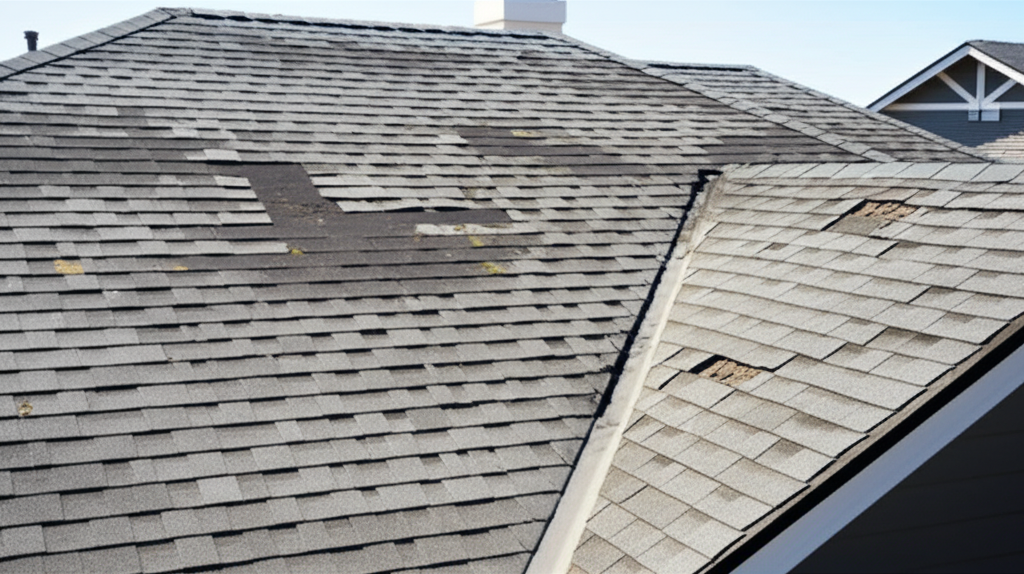
Key Takeaways
- Learn essential maintenance tips for Alabama and Georgia's unique climate
- Understand seasonal maintenance schedules and priorities
- Identify when to DIY vs. when to call professionals
- Save money through preventive care and early problem detection
One of the most challenging decisions homeowners face is determining whether their roof needs simple repairs or complete replacement. Making the wrong choice can cost thousands of dollars and leave your home vulnerable to damage. This comprehensive guide will help you identify the key indicators and make an informed decision.
Understanding Roof Lifespan
Material Lifespans in Alabama and Georgia Climate
Asphalt Shingles:
Other Materials:
Our humid subtropical climate can reduce these lifespans by 10-20% due to:
Key Indicators for Roof Replacement
Age-Related Factors
Approaching End of Lifespan:
If your roof is within 5 years of its expected lifespan and showing multiple problems, replacement is often more cost-effective than continued repairs. Consider:
Structural Issues
Sagging or Drooping:
Widespread Decking Damage:
Extensive Shingle Problems
Granule Loss:
Curling and Cupping:
Missing Shingles:
When Repairs Are Sufficient
Localized Damage
Storm Damage:
Recent storm damage affecting less than 30% of the roof can often be repaired effectively:
Isolated Problem Areas:
Recent Installation Issues
Workmanship Problems:
If your roof is relatively new (under 10 years) but showing problems:
Cost-Benefit Analysis
Repair Costs vs. Replacement
When Repairs Make Sense:
When Replacement is Better:
Long-Term Financial Considerations
Replacement Benefits:
Hidden Costs of Delaying:
Making the Final Decision
Decision Matrix
Create a simple scoring system considering:
Roof Age (30% weight):
Damage Extent (25% weight):
Cost Comparison (25% weight):
Future Plans (20% weight):
Conclusion
The decision between roof repair and replacement depends on multiple factors including age, extent of damage, cost considerations, and your long-term plans. While repairs can be cost-effective for newer roofs with isolated problems, replacement often provides better value for older roofs with widespread issues.
Remember that delaying necessary replacement can lead to more expensive problems including interior damage, structural issues, and emergency repairs during severe weather. When in doubt, consult with experienced local contractors who understand the unique challenges of Alabama and Georgia's climate.
At Summit Roofing Professionals, we provide honest assessments and detailed explanations to help you make the best decision for your home and budget. Our goal is to ensure you have reliable protection that fits your needs and financial situation.
Contact us today for a comprehensive roof evaluation and personalized recommendation for your specific situation.
"Proper roof maintenance in Alabama and Georgia isn't just about fixing problems—it's about preventing them. The humid climate and severe weather patterns in our region require a proactive approach that can save homeowners thousands of dollars in the long run."

Summit Roofing Team
Summit Roofing Professionals
Safety First
Always prioritize safety when inspecting or maintaining your roof. When in doubt, contact professional roofing contractors who have the proper equipment and expertise to handle roof work safely.
Topics Covered

About Our Team
Our expert roofing team at Summit Roofing Professionals has over 15 years of combined experience serving Alabama and Georgia homeowners. We are certified GAF Master Elite contractors and NRCA members.
Continue Reading
Explore more expert roofing insights and tips

10 Essential Tips for Finding the Best Roof Replacement Services Near You
When it comes to home improvement, few projects are as critical as a roof replacement. Your roof is your first line of defense against the elements, and settling for subpar services can lead to costly repairs down the road. Discover 10 essential tips for finding reliable roof replacement services near you.
Read Full Article
Ultimate Guide to Asphalt Shingle Roof Replacement: Tips, Costs, and Expert Insights
Is your roof showing signs of age, wear, or damage? Replacing asphalt shingles might be the solution you need. In this ultimate guide to asphalt shingle roof replacement, we'll walk you through everything from understanding the signs that it's time for a replacement to the costs involved and expert tips to ensure a smooth process.
Read Full Article
How to Choose the Best Roofing Contractor in Atlanta: A Complete 2025 Guide
Finding the right roofing contractor in Atlanta can make the difference between a roof that lasts decades and one that needs constant repairs. Learn the essential factors to consider when selecting a roofing company in the Atlanta metro area.
Read Full ArticleReady for Professional Roofing Help?
Get expert advice and free estimates from Alabama and Georgia's most trusted roofing professionals. Our certified team is ready to help protect your home.
